Commercial UAV News has discussed the many applications for many different sensors ranging from multispectral and thermal imaging to lidar and photogrammetric cameras. But one thing that impacts every drone pilot working in real-world conditions is wind and weather. Most pilots rely on local weather forecasts to determine whether or not it is safe to fly, and there are a number of applications out there that can give up to date information about flying conditions.
However, with these types of options, it is still difficult to obtain accurate and real-time weather notifications for hazardous, localized weather conditions like strong gusts of wind. Pilots often have to trust their instincts about whether or not the conditions are safe for flight. This is one of the many reasons why Anemoment developed the TriSonica Mini wind and weather sensor.
The TriSonica Mini claims to be the world’s smallest and lightest 3D ultrasonic anemometer, and it is capable of providing drone pilots with real-time localized weather and wind sensor data that can help them make in-flight decisions and corrective actions. This enables drone pilots to protect their assets when conditions start to change, which ultimately makes flights safer—imagine being able to change altitude or direction to avoid a gust of wind taking your drone out of its planned flight path.
Beyond the ability to determine real-time flight conditions, having an onboard wind and weather sensor can add value to the data being collected. Sensors like the TriSonica Mini are capable of helping with a variety of data collection needs, from determining the location of a methane gas leak to predicting where things like fire, debris, and even contagions (like COVID-19) will spread. In order to find out more about the various applications and use cases of the TriSonica Mini, the kind of data it produces, and more, we spoke with the team at Anemoment and some of their clients.
Danielle Gagne: If someone were new to wind sensors, how would you describe the capabilities and the types of commercial UAV applications for Anemoment’s TriSonica wind and weather sensor? What is the importance of having accurate wind and weather data?
Anemoment Team: Understanding wind and weather is crucial to knowing how these variables will impact other elements, be it gas emissions, boundary layer profiles, aircraft performance, etc. Mounting a wind sensor on a UAV allows users to capture relevant data in a fluid environment. Some customers are doing meteorological research in areas where ground-based meteorological equipment is impractical, or where using a swarm of UAVs allows collection of a broader array of atmospheric conditions in ways not previously possible.
Practical applications for UAV-mounted anemometers include collecting data for live broadcast meteorologists, collecting data for research meteorologists, urban terrain profiling, or wildfire wind direction monitoring. Others searching for gas emissions need to understand the wind direction to pinpoint the emission source. Having the TriSonica Mini sensor on a UAV allows for measurement in maritime, remote, and hard-to-access places.
Compared to other wind sensors, what differentiates the TriSonica Mini?
The primary differentiators of the TriSonica Mini are size, weight, and power (SWaP). The TriSonica Mini has the best combination of these features for use in a UAV application. The size and weight are small enough that they have little effect on the UAV flight characteristics. The TriSonica Mini can be powered directly from the UAV battery and our power draw is insignificant to the total flight time of the UAV. Additionally, the TriSonica Mini has a unique open measurement architecture that allows it to measure the airflow in any orientation, so it does not restrict flight maneuvers while collecting meteorological data.
Anemoment’s TriSonica Mini Wind & Weather Sensor is different from other anemometers on the market because it has a faster data rate and offers a W wind component not available in similarly priced anemometers. While fast data rates may not be useful for measuring bulk wind speed, they are critical for atmospheric profiling that focuses on turbulence.
The TriSonica Mini is uniquely small and full featured, allowing the broadest data collection in the most effective package.
How does adding a wind and weather sensor to a drone sensor package add additional capabilities that would not be obtainable otherwise? How does this add value either by being safer, cheaper, or faster?
Let’s use the example of a drone that helps firefighters, such as was used in California this past summer. Pairing a wind and weather sensor with existing heat and smoke detecting sensors adds detailed information about where the wind might next drive the flame, and what the water-content of the air in that area is. It can also determine the direction that ash and embers may be carried. This information enables the operator and firefighters to take action without the risk of having to physically be where these measurements are taken, and the data obtained is more detailed and precise than visual observation.
A second example is the ability to fly a drone to places people cannot easily go, such as to circle around a ship at sea to identify a plume of emissions and identify its exact source, or to test wind-influenced dispersion patterns for crop spraying, or permit temporary measurement of conditions in sensitive environments where the presence of feet and vehicles would disturb the ecosystem.
For example, AEgis Technology Group integrates the TriSonica Mini into their UAS fleet to give customers the ability to make precision in-situ wind, temperature, humidity, and barometric pressure measurements in places that are near impossible with other methods, such as taking measurements 1 meter over open ocean or above venting exhaust stacks. There is incredible value in the combined system by allowing operators to make wind and temperature measurements in places that were previously not possible or practical, and then by being low cost enough to risk losing or contaminating the system.
Another example is understanding atmospheric boundary layer turbulence—this is the same thing that makes airplanes bounce so annoyingly during flight. Previously, the existing sensors out there are either sensors set on tall towers, perhaps limited to some 300 meters in height, or LIDAR systems, which measure conditions at about 3,000 meters and higher. That space between these two measuring systems is only now becoming understood through UAV-based atmospheric research with sensors like the TriSonica.
Of course, the key thing with any drone-based sensor-package is size, weight, and power consumption. As Alex Clark of AEgis Technology Group says, “For me, size and weight are key attributes. The TriSonica Mini is small, easy to put on the UAV and it doesn’t really take much power. I can always add more instruments to my payload, especially if they all weigh nothing and they don’t take up any space.”
Although accurate data collection is necessary to turn out a quality end product, the ability to process that data in a timely manner and derive actionable results is also required. What are some ways Anemoment helps end users process and analyze the data that is collected by the TriSonica Mini to make real-time decisions?
The internal computer of the TriSonica Mini calculates the wind speed, wind direction (360° horizontal and 15° up-and-down from horizontal), air temperature, air pressure, and humidity for the location of the sensor. It also identifies its horizontal orientation relative to magnetic north and whether the device has been tilted. The user can determine how often the TriSonica Mini senses and processes local conditions, from as slow as a few times per hour or as fast as 40 times per second. The results of these calculations are then put out as a simple stream of ASCII data, which can be collected by the UAV’s onboard logging system or can be transmitted to a ground station.
Most users have unique data-processing and decision-making needs, which is why the TriSonica Mini data stream is generic; it provides the greatest functionality to all users. Data output from the TriSonica Mini is easy to display over a terminal or easy to parse in software. The TriSonica Mini data display GUI is also very useful for benchtop testing and troubleshooting prior to integration in the UAS payload.
The TriSonica Mini has been used by a variety of end users across multiple markets, even in baseball. Can you outline an instance where adding your wind and weather sensor to a commercial drone mission provided added value for your customer? What was the challenge, how was TriSonica Mini able to provide a solution, and what was the end product?
Large ocean-going vessels present broad surfaces that interact significantly with wind forces. Fuel economy for the ship, as well as landing safety for any visiting aircraft, can be affected by that wind. Testing a miniaturized model of the ship in a wind-tunnel might identify the ship’s response to wind in some hypothetical conditions, but Mother Nature has a way of dealing out situations different from those found in testing. One manufacturer of very large ships wanted to better understand the flow of wind currents around the central structure of a ship under real-world weather conditions. This user mounted a pair of TriSonica Minis to a UAV, which they then flew around the ship while underway. The wind data collected by the TriSonica Minis was analyzed by their specialists to help map turbulence and crosswind flows at different speeds and wind directions to improve safety at sea.
AEgis Technologies Group has staff experienced in integrating over 20 TriSonica Minis into various versions of UAV weather payloads and ground stations. Our market applications range from universities that are doing research to government agencies that are performing atmospheric characterization. The primary challenge is always keeping payload weight down and UAS endurance up.
What are some examples of how the TriSonica is currently being integrated on UAVs?
One of the important things to consider is that these sensors can be used for more than just predicting the weather. For Alex Clark, Director of Advanced Sensor Systems at AEgis Technology Group, numerical weather modeling or atmospheric profiling, especially gathering data below 120 meters, is an essential part of the work that Clark and his team are conducting on behalf of the Space Missile Defense Command (SMDC) and their interest in propagating high-energy lasers in lower earth atmosphere. By estimating the Refractive-Index Structure Coefficient or optical turbulence using numerical weather modeling predictions, they hope to better estimate high-energy system effectiveness.
The goal is to measure temperature at multiple places at the same instant in time. In knowing differential temperature from node to node they were able to estimate atmospheric optimal. To accomplish this Clark deployed a small unmanned aerial vehicle (UAV or drone) tethered adjacent to the tower. The UAV was equipped with a sonic anemometer to capture data necessary to determine optical turbulence and boundary layers.
In another recent use case, Sparv Embedded worked with Linköping University to integrate a high precision CH4 (methane) sensor from Aeris Technologies for UAS applications.
Methane is a gas with a greenhouse effect 84-times stronger than carbon dioxide when counted over 20 years after releasing the gas into the atmosphere. Accurately measuring methane emissions is important, not only in raising awareness of the environmental impact methane has on our atmosphere, but also in helping to formulate realistic and effective regulations regarding its release.
The sensor has an unprecedented CH4 resolution for its size, measuring variations smaller than one ppb (parts per billion). After they adapted the sensor for UAV use, the payload weighs in at 1.8 kg—light enough to be flown around 10 minutes with a fairly small quadcopter. This offers an exciting possibility for a more convenient sampling of methane.
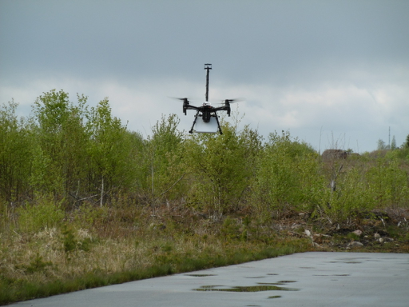
The quadcopter hovering with the white Aeris sensor attached underneath. The quadcopter also carries a Sparvio sensor system that synchronizes data from Aeris with readings from the TriSonica Wind & Weather Sensor, GPS and other sensors.
Sparvio logs all data and transmits it to a ground station to visualize on a map in real-time. In the end, the combination of all data will be used to calculate not only the location of methane emission sources, but also the quantity of gas flow.
As the COVID-19 global pandemic continues to impact our ability to be on site physically doing our jobs, technology is proving solutions to address needs and actively combat the virus. Can you envision new use cases for the TriSonica Mini that may come about as a result of this crisis?
A dismaying feature of the COVID-19-causing virus is its ability to aerosolize and remain in the air for a time. Knowing the direction and force of air flows—even the very least breath of wind, which the TriSonica Mini sensor is very good at detecting—that might bear contagion will be essential in helping to establish where and whether people might safely form queues or small groups.
Of course, remote delivery of goods and materials is very much on people’s minds right now. As we move toward a future where the requirement for line-of-sight operation is lifted, it becomes essential that UAVs have self-awareness of its surroundings—such as wind gusts as it maneuvers in urban canyons, or updraft/downdraft conditions as it crosses various terrains— and be able to correct for them. A lightweight, low-power, real-time onboard wind and weather sensor will be key to enabling that awareness.
What are some of the drone platforms that the TriSonica Mini can integrate with?
The TriSonica Mini has been integrated into multiple UAV platforms. We provide two mounting options: flat base and a pipe-mount. The options allow the end user to customize how the TriSonica Mini integrates with their UAV platform. The following are just a few examples:
- AEgis Technology Group has developed a universal payload system to allow the TriSonica Mini to integrate with their entire fleet of drone products (IEV2, E900, E1250) and the DJI M600.
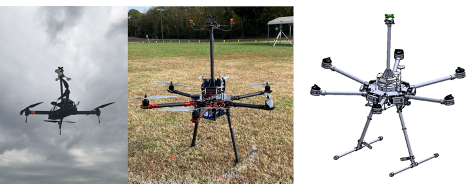
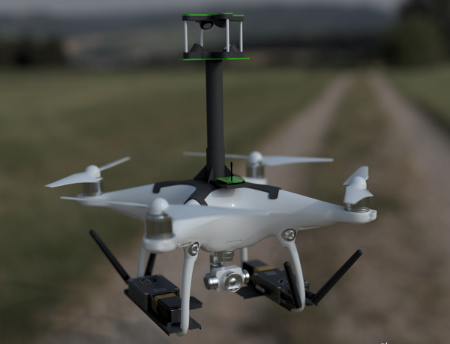 TEN TECH LLC, a provider of aerospace and defense engineering services, integrated the TriSonica Mini on their Huracán Multi-Purpose Aerial Drone (MPAD) as well as the DJI Phantom 4 drone.
TEN TECH LLC, a provider of aerospace and defense engineering services, integrated the TriSonica Mini on their Huracán Multi-Purpose Aerial Drone (MPAD) as well as the DJI Phantom 4 drone.
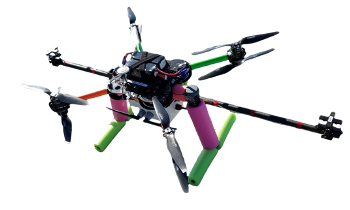 The United States Naval Academy in conjunction with George Washington University have incorporated the TriSonica Mini on their custom designed quadcopter for naval wind profiling studies.
The United States Naval Academy in conjunction with George Washington University have incorporated the TriSonica Mini on their custom designed quadcopter for naval wind profiling studies.
- The University of Kentucky has incorporated the TriSonica Mini on top of their 3DR SOLO quadcopter to conduct atmospheric turbulence studies.
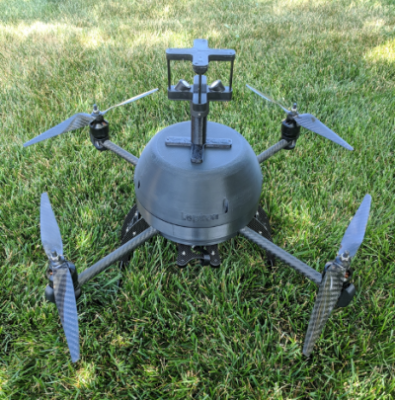
- The TriSonica Mini has been deployed on the Leptron RDASS™ (Rapidly Deployable Aerial Surveillance System) Quadcopter.
- ERMC Heli has integrated the TriSonica Mini into weather sensor payloads fitted on their Yuneec Hexacopter.
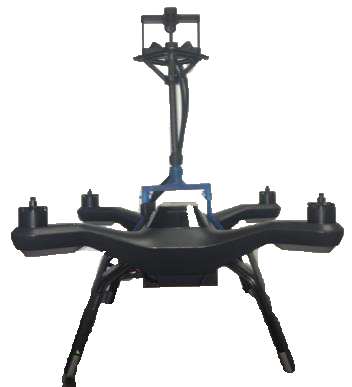
- Oklahoma State University has integrated the TriSonica Mini on their custom quadcopter.
What are some key takeaways you would want readers to understand about the TriSonica Mini?
With the TriSonica Mini acoustic anemometer, you can Know the Wind in ways and places like never before. Compact, light, and efficient, the TriSonica Mini is a highly accurate tool for atmospheric monitoring, weather reporting, and ecosystem research.
If someone were to be interested in learning more about your product, how might they go about contacting you?
You can contact us at https://anemoment.com/contact/


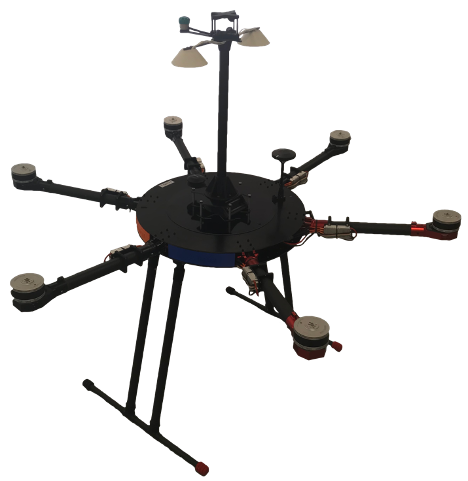













Comments